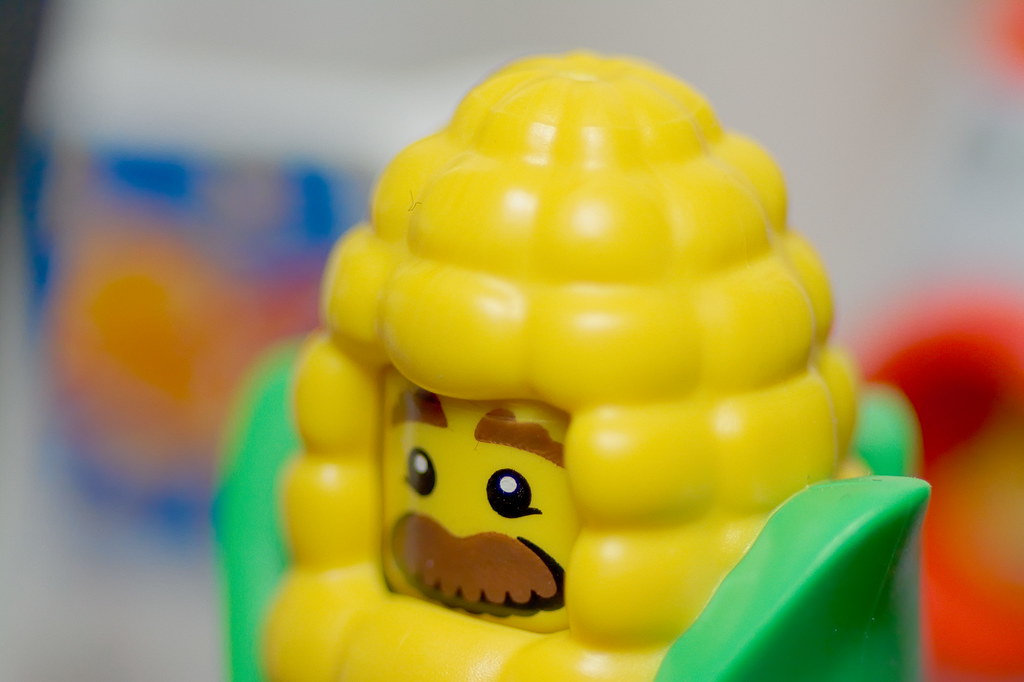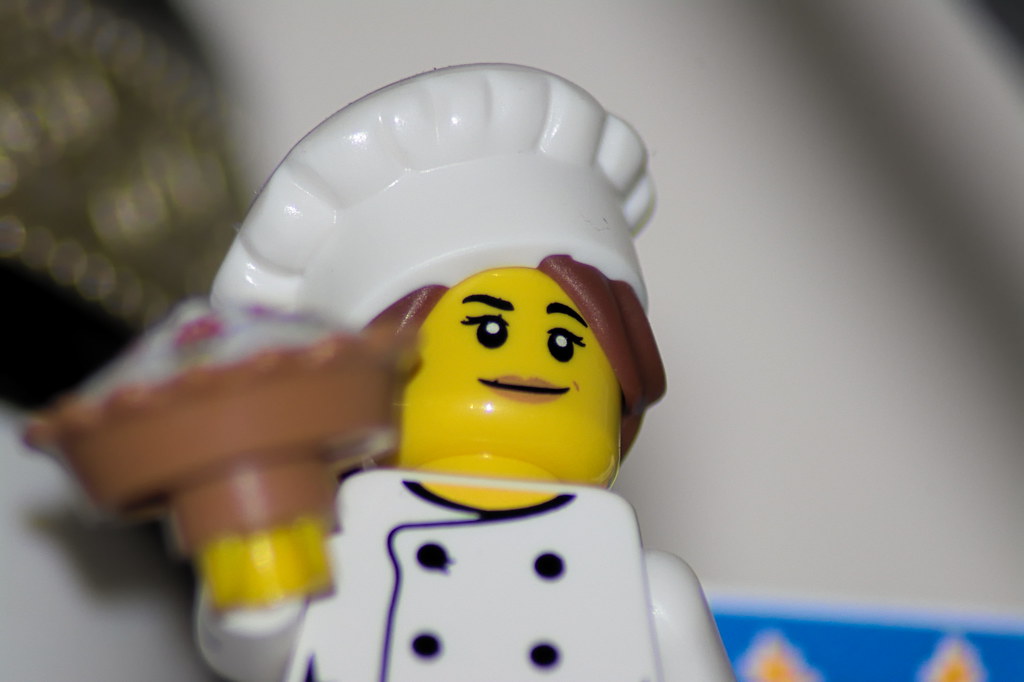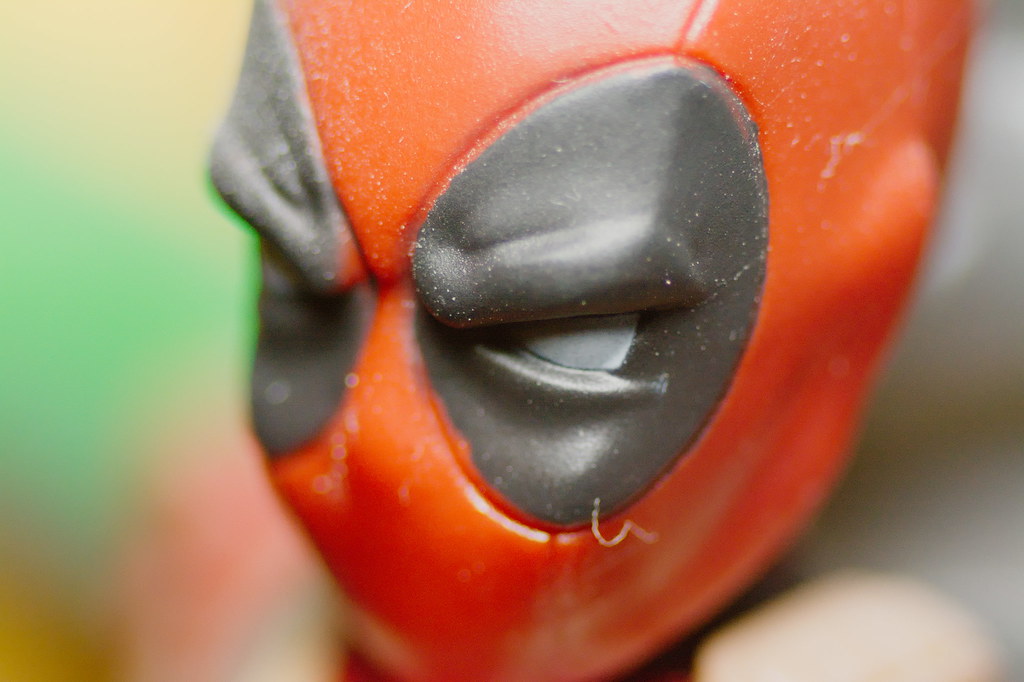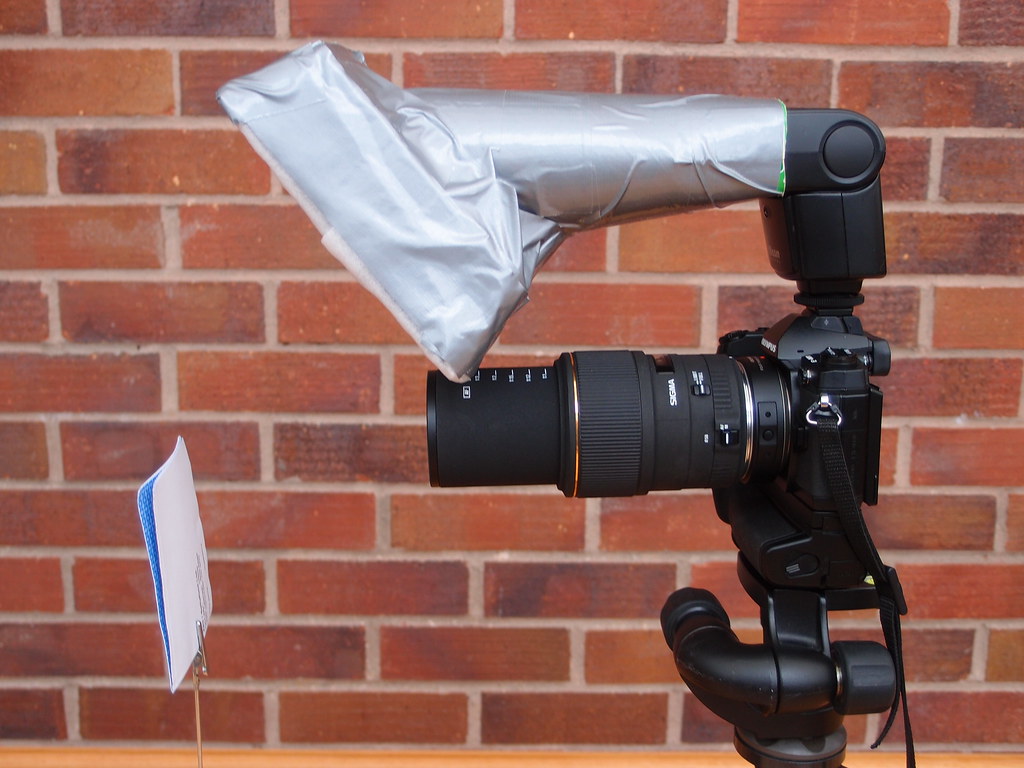- Messages
- 2,559
- Name
- Ben
- Edit My Images
- Yes
 lego cornhead macro by Ben Gray, on Flickr
lego cornhead macro by Ben Gray, on Flickr Lego chef macro by Ben Gray, on Flickr
Lego chef macro by Ben Gray, on Flickr dusty deadpool macro by Ben Gray, on Flickr
dusty deadpool macro by Ben Gray, on Flickr lego cornhead macro by Ben Gray, on Flickr
lego cornhead macro by Ben Gray, on Flickr Lego chef macro by Ben Gray, on Flickr
Lego chef macro by Ben Gray, on Flickr dusty deadpool macro by Ben Gray, on Flickr
dusty deadpool macro by Ben Gray, on FlickrYeah, unfortunately I am still limited to the on camera pop-up flash at the moment, so diffusing it is the best option at the moment. I think I have got the balance right, more diffusion would probably be too far.•
A diffusor will reduce the harshness of the specular
surfaces but it will make them bigger as well!
An other point is the direction of the light that will as
seen here flattens the tonal range in the captures.
more diffusion would probably be too far.
Thank you man, the pringle tube diffuser is certainly not a pro tool haha.Ben you are doing well with the kit you have.
Thank you man, the pringle tube diffuser is certainly not a pro tool haha.

 EM1 sigma 105 Mk11 by Alf Branch, on Flickr
EM1 sigma 105 Mk11 by Alf Branch, on FlickrThose olympus cameras are so pretty.I beg your pardon this is wa I am using
EM1 sigma 105 Mk11 by Alf Branch, on Flickr
Ps I am not professional
Not really as it is often the only way out but
not in popup approach, you're right in this.
Ps I am not professional
I think the images of…
I know you (if anyone!) understood what I meant.
I understood you to mean that the popup approach would be inappropriate.
Yes, this is what I meant, literally…
but when the light source is extended
and fit with extra diffusion at an angle
that an other light setup.
It is slightly less than 45 because the MFD with the tele lens isn't short enough even with the extension tubes.•
Cool Ben!
Did you make sure the diffusor
inclination is -/+ 45°?
Did you make sure the diffusor
inclination is -/+ 45°?
What is the rationale for that angle Daniel?
What is the rationale for that angle Daniel?
The better suggestion would be 60°+
and the rationale is the greater control
over the specular surfaces.
why would one particular angle for the flash be favoured?
The greatest possible angle to accommodate a
given scene with the greatest possible diffusion.
I know you know!
Not only don't I know, I don't understand.
Sorry, I thought you were pulling my leg,
Working in natural set ups may be very confusing as conditions are changing all the time and finding a common denominator out of these may be extremely difficult.
As I was working in the science photography dept. at the university, my old mentor told me that these problems can only be understood and solved in studio conditions, and he was damn right… as always.
The angle of incidence is inversely relevant to the size of the diffusion;
where the greater diffusion may permit greater choice of angle of incidence on a same given subject and situation thus controlling the specudar features of any surface… may it be even glass.
I learned that the most precious tool in a photographer'sThis "reality testing" cannot be addressed solely by a reductionist, simplifying studio-based approach. IMO.
I cannot ascribe a meaning to this statement
The angle of incidence is inversely relevant to the size of the diffusion
Studio conditions will reveal it.It seems to imply something like "As the angle of incidence increases the size of the diffusion decreases, and vice versa." I can't make any sense out of that.
Any size! The larger the light source the lesser the angleWhat is the "size of the diffusion"?
the larger one is, the less critical the angle of her other.And what is the nature of this "inverse relevance"?
Yes, LARGER was meant. The level of diffusion is not"Greater" could do with being disambiguated here I think; it could mean "larger" or "more thoroughly diffused", or both.
BINGO!Do you mean that with a larger diffuser and/or more thoroughly diffused illumination there will be light hitting any particular point on the subject from a greater range of angles, thus reducing the intensity of highlights coming off of reflective areas?
You should, Nick, as you proved your understanding withBut I don't see what it has to do with the angle of the diffuser (you have suggested 45 degrees, and 60 degrees), which is where we started this discussion.
the pringle tube diffuser is certainly not a pro tool haha.
I know. I prefer not to use flash at all where possible anyway, natural light is superior.I am mentoring a neophyte photographer in Namibia.
All his studio is DIY and he produces outstanding shots
for his level and non-pro equipment.
It is not the gear that makes/takes a picture.
You know that.
LegitimateI prefer not to use flash at all where possible
In no way… light is light. There is nothing thenatural light is superior.
I learned that the most precious tool in a photographer's
bag is predictability. In any given situations, the sum of
one's experiences will be essential to evaluate difficulties
and find an appropriate strategy.
In a studio situation, the conditions are controllable and
contant. Data is easier to process and the results are
recognizable strategies that will lead to greater predicta-
bility that maybe extrapolated to other situations IME (in
my experience).
Try with the worst subject of all: the humble marble.
The importance of the angle of incidence becomes less
relevant the larger the size of the diffusion
Studio conditions will reveal it.
Any size! The larger the light source the lesser the angle
of incidence maybe. Working with insects will reduce the
relative size.
the larger one is, the less critical the angle of her other.
Yes, LARGER was meant. The level of diffusion is not
determined by the number of diffusing layers but by the
distance of the light source.
BINGO!
You should, Nick, as you proved your understanding with
a perfect conclusion in the point before.
Hide behind a cloud.Legitimate
In no way… light is light. There is nothing the
Sun can do and the flash can't. Nothing.
Hide behind a cloud.
